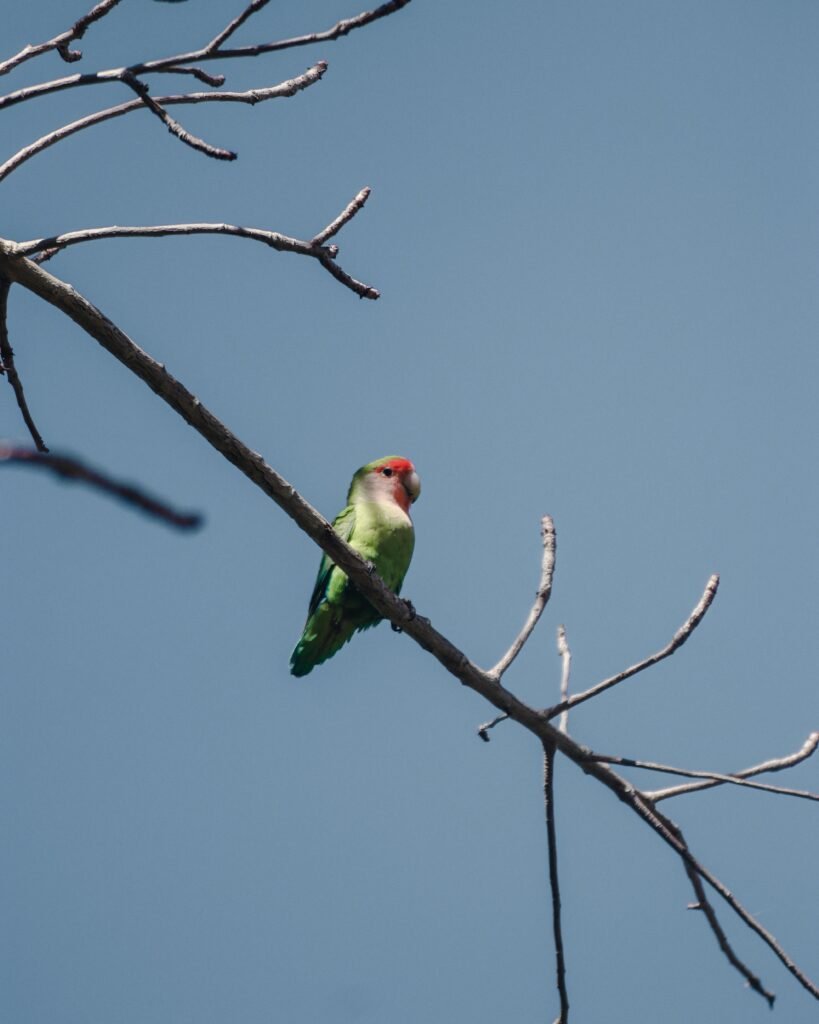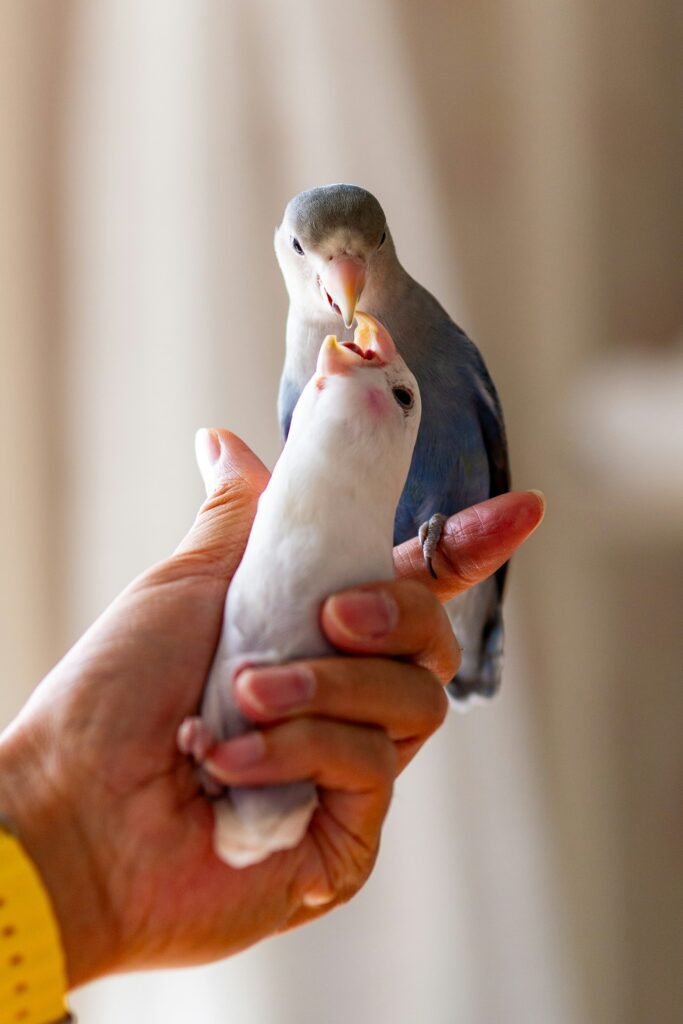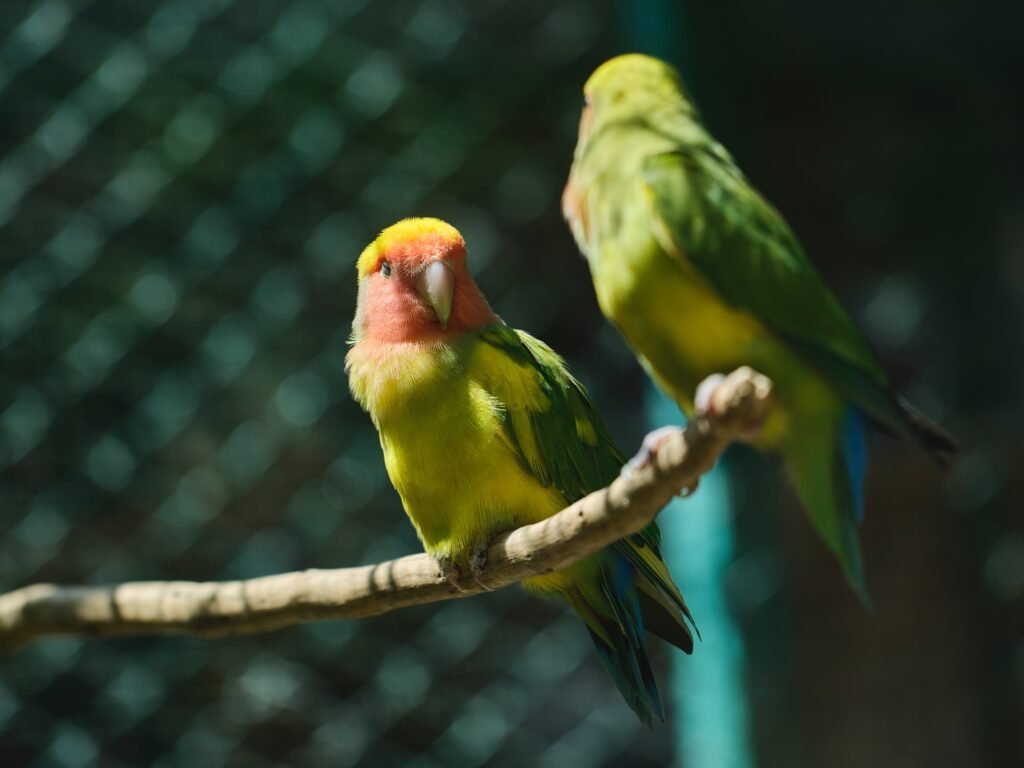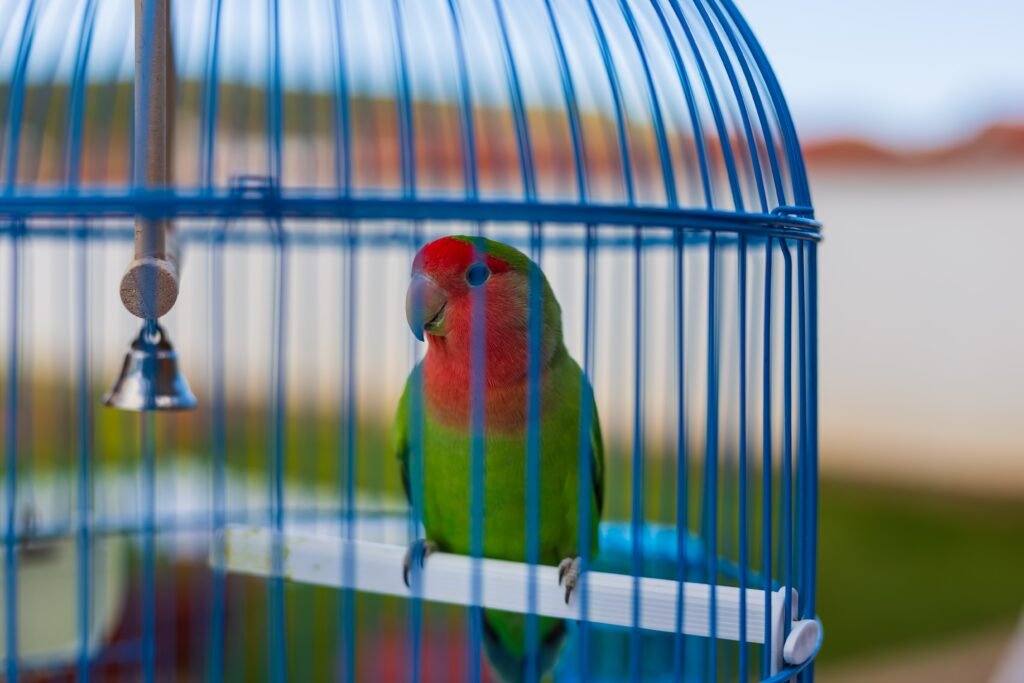 Blue Masked Lovebirds, scientifically known as Agapornis personatus, are small and colorful parrots native to the arid regions of southwestern Africa. These charming birds are highly sought after as pets due to their vibrant blue plumage, playful nature, and ability to form strong bonds with their owners. In this comprehensive guide, we will delve into the various aspects of caring for, feeding, and breeding blue masked lovebirds, ensuring that you have all the information you need to provide the best possible care for these delightful avian companions.
Blue Masked Lovebirds, scientifically known as Agapornis personatus, are small and colorful parrots native to the arid regions of southwestern Africa. These charming birds are highly sought after as pets due to their vibrant blue plumage, playful nature, and ability to form strong bonds with their owners. In this comprehensive guide, we will delve into the various aspects of caring for, feeding, and breeding blue masked lovebirds, ensuring that you have all the information you need to provide the best possible care for these delightful avian companions.
Introduction
Blue Masked Lovebirds, scientifically known as Agapornis personatus, are small and colorful parrots native to the arid regions of southwestern Africa. These charming birds are highly sought after as pets due to their vibrant blue plumage, playful nature, and ability to form strong bonds with their owners. In this comprehensive guide, we will delve into the various aspects of caring for, feeding, and breeding blue masked lovebirds, ensuring that you have all the information you need to provide the best possible care for these delightful avian companions.
Blue Masked Lovebirds are known for their beautiful blue plumage, which adds a vibrant splash of color to any aviary or home. These birds are relatively small in size, measuring about 5.5 to 6 inches in length, making them perfect for those with limited space. Despite their small stature, Blue Masked Lovebirds are highly active and require a spacious living environment to thrive. Providing a suitable and spacious cage or aviary is crucial for their well-being. Ideally, the cage should be large enough to allow for plenty of exercise and flight. It is recommended to opt for a cage with horizontal bars to facilitate climbing and bar spacing that is narrow enough to prevent escape.
Environmental enrichment plays a vital role in the overall well-being of Blue Masked Lovebirds. These birds are highly intelligent and require mental stimulation to prevent boredom. To enhance their living space, consider adding perches of various thicknesses, toys, and swings. These additions will keep them entertained and engaged. Natural branches can also serve as perches and provide opportunities for chewing, which is important for their beak health.
Maintaining the right temperature and lighting conditions is essential for the health and happiness of Blue Masked Lovebirds. These birds thrive in temperatures between 68°F and 78°F (20°C to 25°C). It is important to keep their cage away from drafts and direct sunlight, as these can be detrimental to their well-being. Additionally, providing a full-spectrum light source helps mimic natural daylight and promotes their overall health.
Blue Masked Lovebirds are social creatures that thrive on interaction and companionship. Regular and gentle handling can help develop a strong bond between you and your pet bird. However, it’s important to note that lovebirds can be nippy and may require patience and consistent positive reinforcement training to discourage aggressive behavior. Building trust and establishing a routine of handling from an early age can help minimize any undesirable behavior.
Regular veterinary check-ups are essential to ensure the well-being of your Blue Masked Lovebirds. Finding a reputable avian veterinarian who can provide routine health checks, vaccinations, and necessary treatments is crucial. Additionally, being vigilant for any signs of illness such as changes in behavior, appetite, or feather quality is important. If any concerns arise, it is best to consult a professional for guidance.
Feeding
Balanced Diet
A nutritious and balanced diet is crucial for the overall health and longevity of Blue Masked Lovebirds. Their diet should consist of a variety of fresh fruits, vegetables, high-quality pellets, and limited amounts of seeds. Aim to provide a diverse range of foods to meet their nutritional needs. Leafy greens such as kale and spinach, carrots, apples, berries, and sprouted seeds are excellent choices. Introducing a variety of foods will ensure that your lovebirds receive a wide array of essential nutrients.
Fresh Water
Clean and fresh water should always be available to your Blue Masked Lovebirds. Ensure that the water is changed daily and that the water dispenser or bowl is kept clean to prevent bacterial growth. Additionally, consider offering water through a shallow dish for them to bathe, as lovebirds enjoy splashing around and keeping their feathers clean.
Treats and Supplements
Occasional treats can be offered to your Blue Masked Lovebirds as a form of enrichment and reward. However, it is important to remember that treats should only constitute a small part of their overall diet to maintain a balanced intake of essential nutrients. Suitable treats include small portions of nuts, millet sprays, or dried fruits. Consult with a veterinarian to determine suitable vitamin and mineral supplements, if necessary.
Breeding
Pairing and Compatibility
Breeding Blue Masked Lovebirds requires the selection of compatible pairs. It is important to ensure that the birds are mature, healthy, and unrelated to avoid any genetic issues. Observing their behavior and compatibility before introducing them to a breeding environment is crucial. This will help ensure successful breeding and the production of healthy offspring.
Nesting and Breeding Environment
Providing a suitable nesting environment is crucial for successful breeding. Place a nest box in the cage or aviary, ideally made of wood with a small entrance hole. Line the nest with suitable materials such as shredded paper or natural fibers. This will provide a comfortable and secure space for the breeding pair. Offering privacy and seclusion to the breeding pair is essential to minimize stress and disturbance.
Incubation and Chick Care
Once the female Blue Masked Lovebird lays eggs, the incubation period typically lasts around 23 days. During this time, the female will spend most of her time inside the nest, while the male will assist with feeding and protecting the nesting area. It is important to provide them with a nutritious diet during this period to support healthy chick development. Once the chicks hatch, monitoring their growth and consulting avian experts for any specific care instructions is crucial.
Conclusion
Blue Masked Lovebirds make delightful pets with their vibrant plumage, playful nature, and ability to form strong bonds with their owners. By following the guidelines outlined in this ultimate guide, you will be well-equipped to provide excellent care, feeding, and breeding opportunities for these captivating avian companions. Remember to consult professionals and continually educate yourself on the best practices to ensure the health and happiness of your Blue Masked Lovebirds.
FAQ
1. What size cage should I provide for my Blue Masked Lovebird?
It is recommended to provide a spacious cage for your Blue Masked Lovebird to thrive. The cage should be large enough to allow for plenty of exercise and flight. Opt for a cage with horizontal bars to facilitate climbing and ensure that the bar spacing is narrow enough to prevent escape.
2. How should I enhance the living space for my Blue Masked Lovebird?
To enhance the living space for your Blue Masked Lovebird, consider adding perches of various thicknesses, toys, and swings. Natural branches can also serve as perches and provide opportunities for chewing, which is important for their beak health. These additions will keep them entertained and engaged.
3. What temperature and lighting conditions are ideal for Blue Masked Lovebirds?
Blue Masked Lovebirds thrive in temperatures between 68°F and 78°F (20°C to 25°C). It is important to keep their cage away from drafts and direct sunlight, as these can be detrimental to their well-being. Providing a full-spectrum light source helps mimic natural daylight and promotes their overall health.
4. How can I build a strong bond with my Blue Masked Lovebird?
Regular and gentle handling is key to developing a strong bond between you and your Blue Masked Lovebird. Lovebirds can be nippy, so patience and consistent positive reinforcement training are necessary to discourage aggressive behavior. Building trust and establishing a routine of handling from an early age can help minimize any undesirable behavior.


